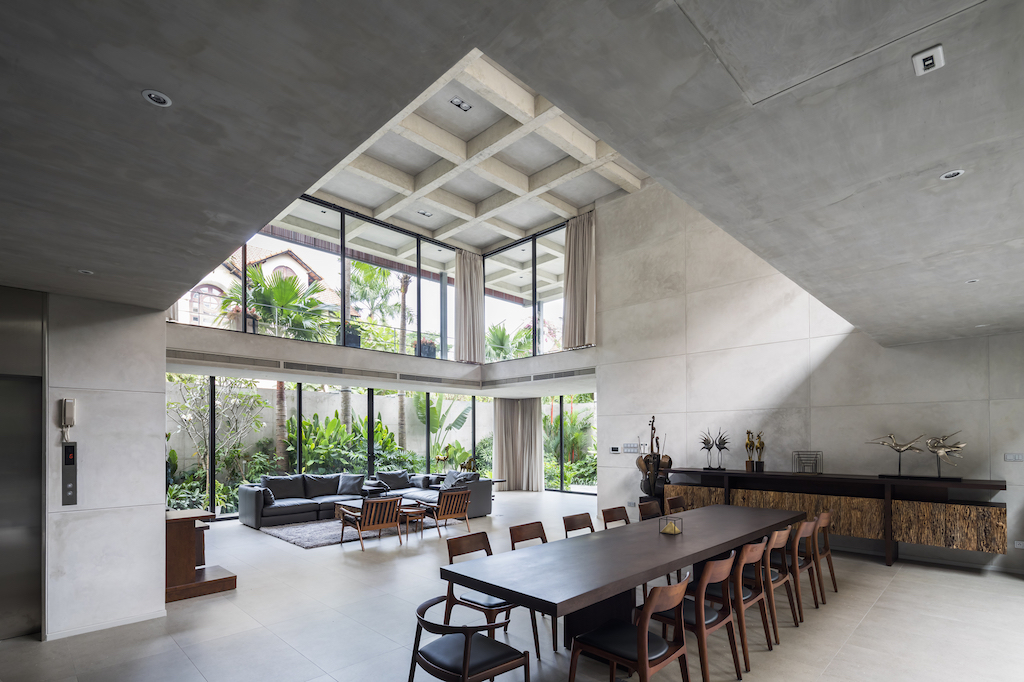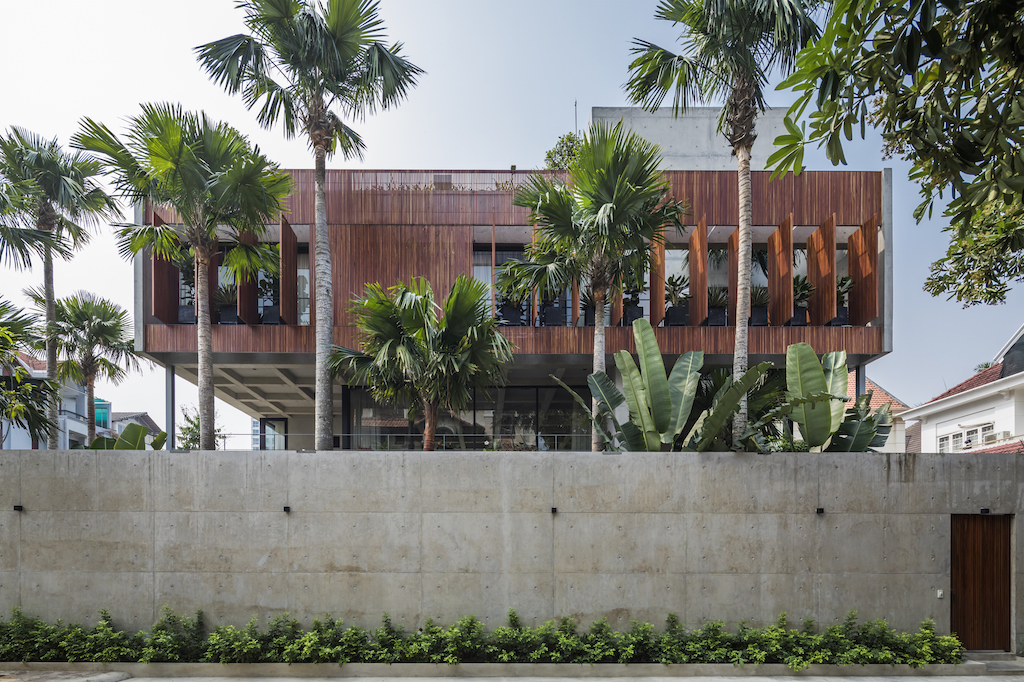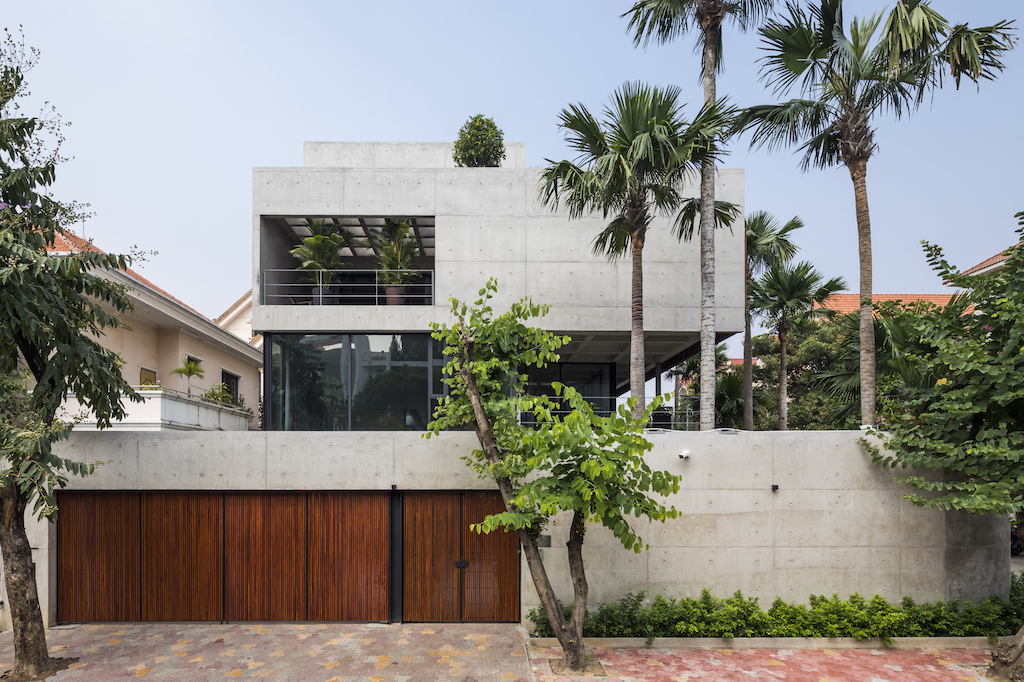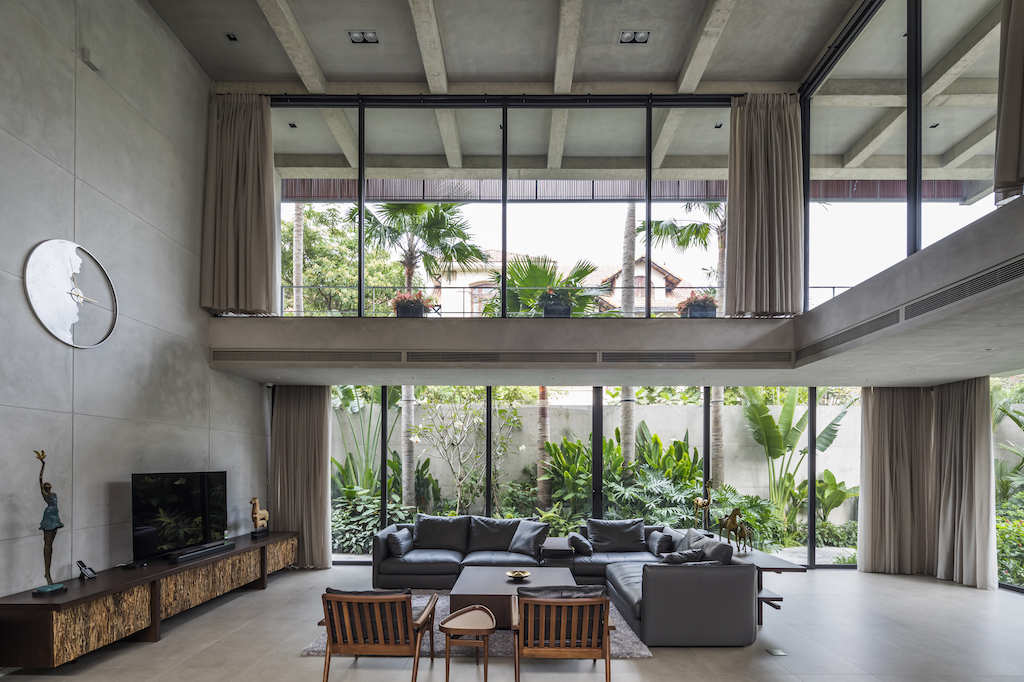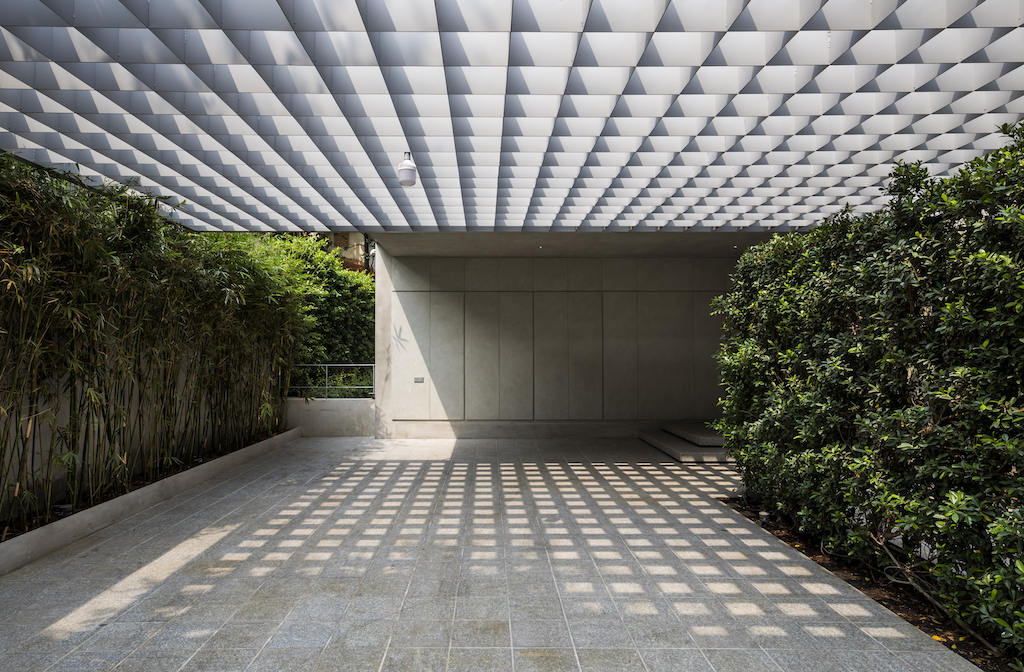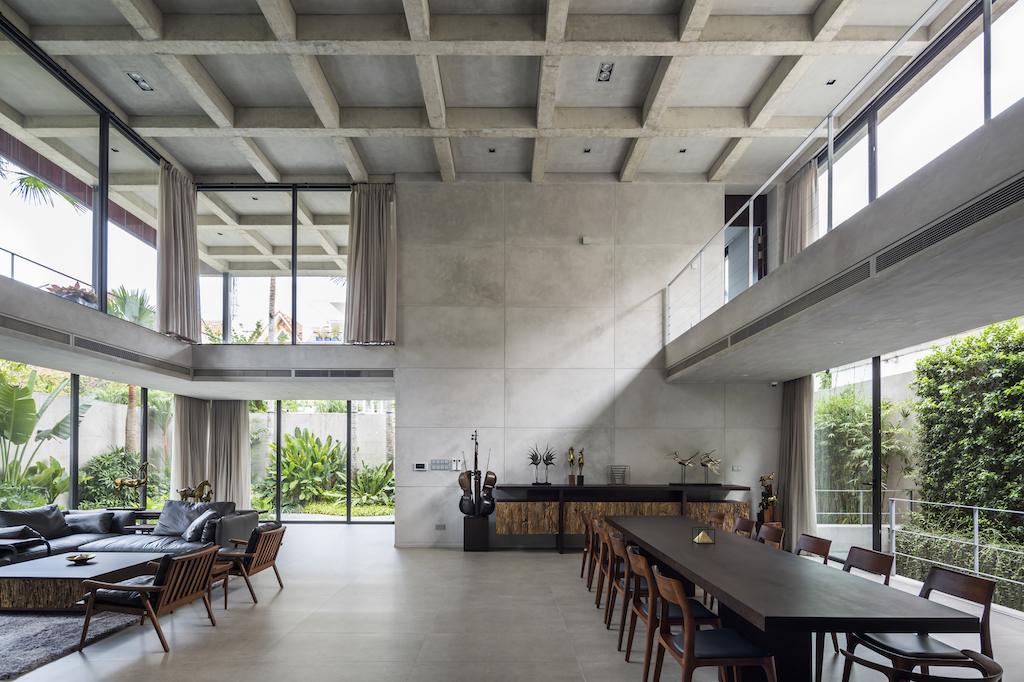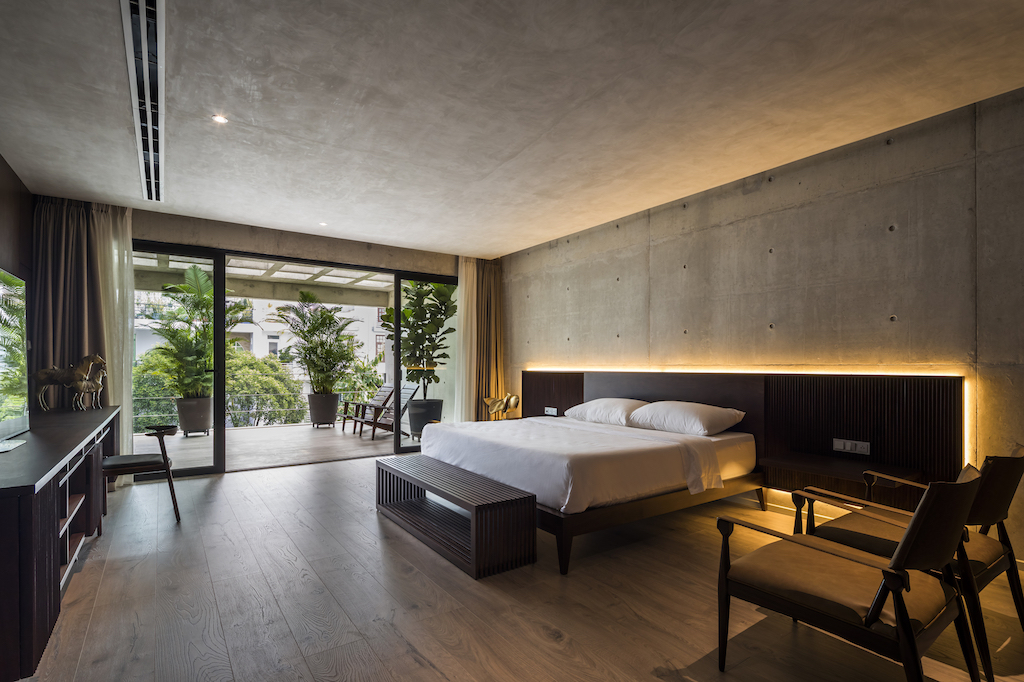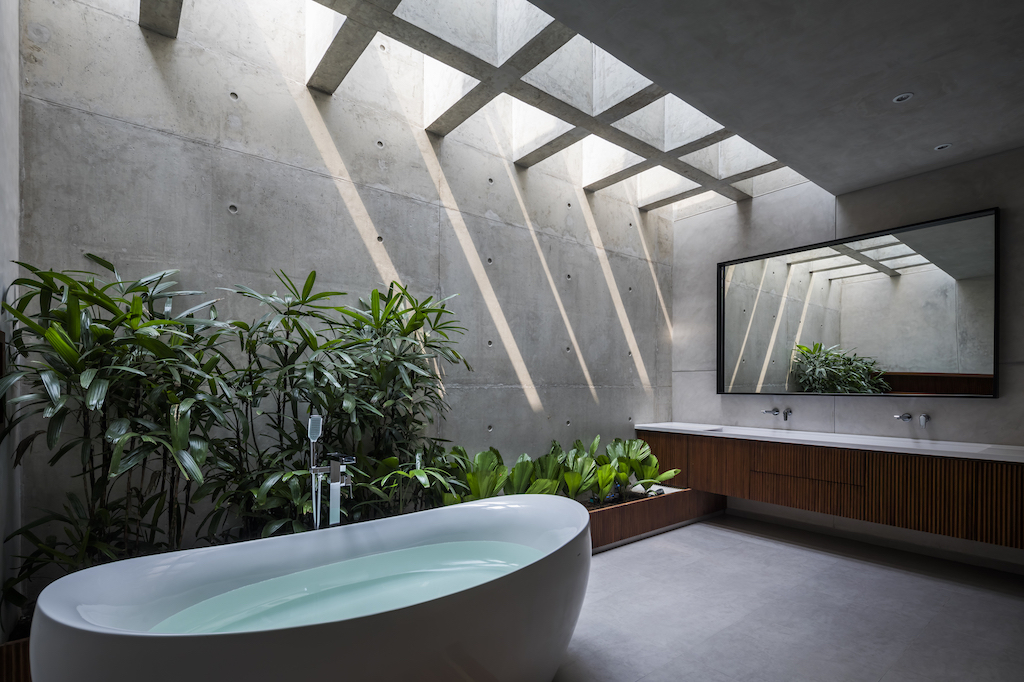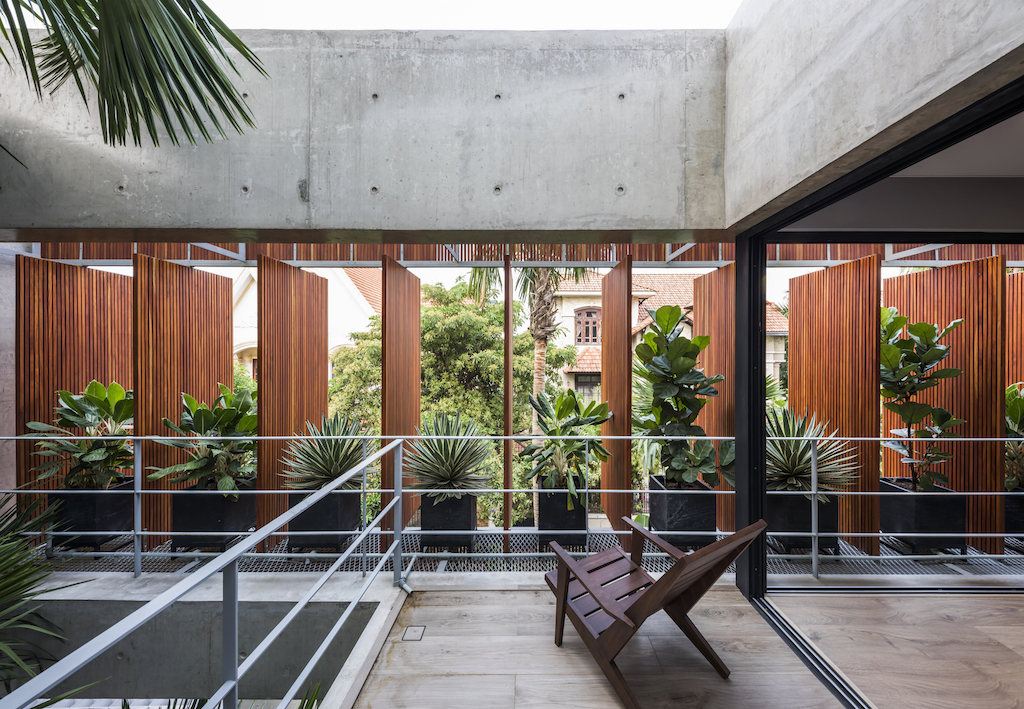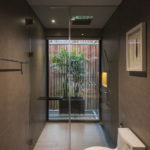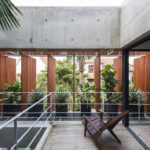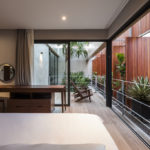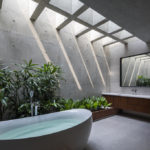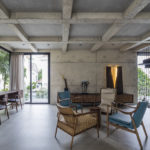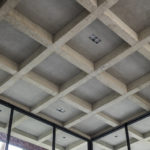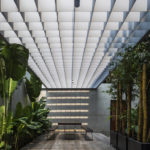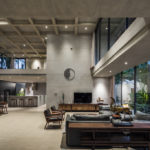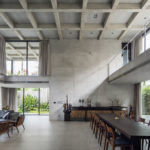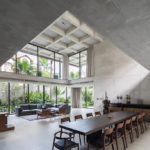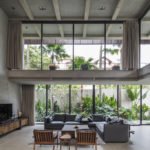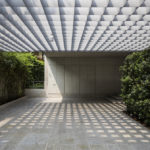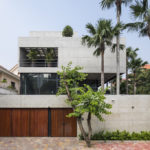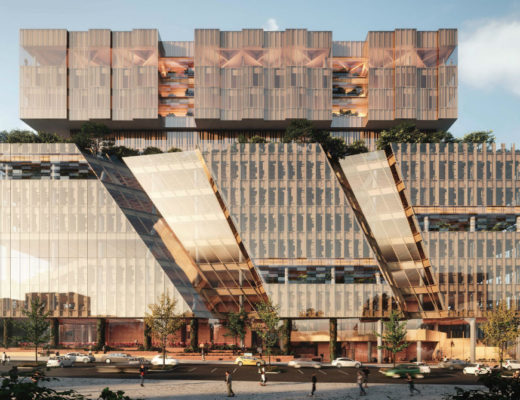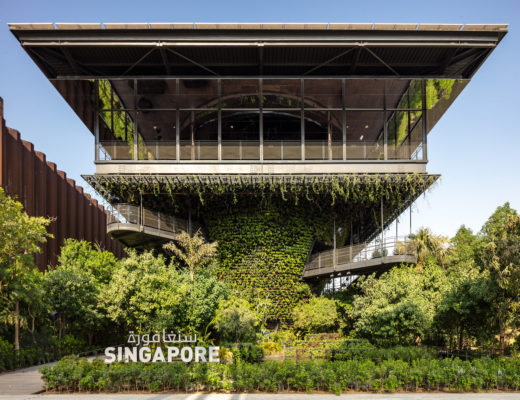Located in Ho Chi Minh City, the 877m² Bunker House by Nha Dan Architects takes cues from one of the firm’s previous projects in which it explored a system of concrete beams and columns that were used to free the floor plan of columns, better connecting the different spaces while letting the outdoors in.
Led by architect Nguyen Dinh Gioi and assisted by Tran Minh Phuoc and Luong Hien Phuong, the team employed this concrete system not only as a structure but also as spatial partitions and the project’s guiding aesthetics.
A series of concrete columns grouped into three legs serve as structural anchor points for the cantilevered waffle slabs. These three legs define the spatial experiences throughout the house – on the first floor, the first leg protects the living spaces from the outside world; the second, essentially an elevator core, and the third leg together delineate a soft border between served and service spaces.
The first and second leg accentuate the living and dining room with the added height. On the upper levels, these legs merge with non-structural walls to define the limits between the interior and the outdoors, and partition off the upper level into smaller rooms.
You might also like:
Damith Premathilake Architects designs tropical modernist house in Colombo overlooking paddy fields
Ivan Priatman Architecture designs a house with concrete geometric panels and glass frames
The raw aesthetic and texture from the waffle slabs’ ribs are continued onto the concrete and metal pergolas on the outside, and also the ceilings and walls. The resulting interior space feels contained and sturdy like a bunker, and yet fluid, airy and full of natural light.
See the full image gallery here:
Photos: Hiroyuki Oki

